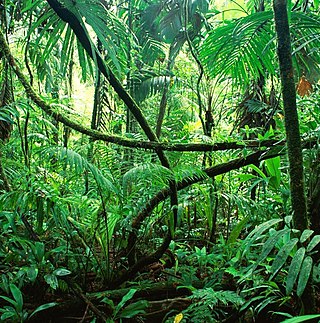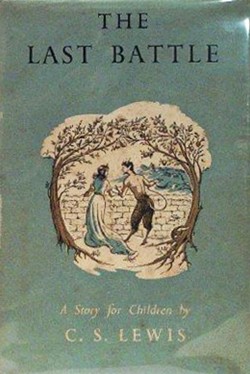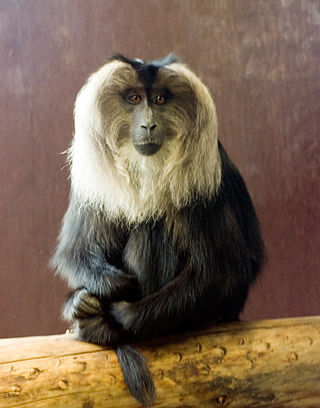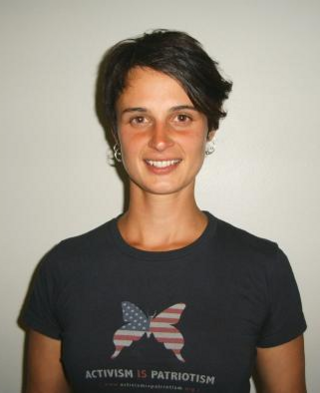
Deforestation or forest clearance is the removal and destruction of a forest or stand of trees from land that is then converted to non-forest use. Deforestation can involve conversion of forest land to farms, ranches, or urban use. About 31% of Earth's land surface is covered by forests at present. This is one-third less than the forest cover before the expansion of agriculture, with half of that loss occurring in the last century. Between 15 million to 18 million hectares of forest, an area the size of Bangladesh, are destroyed every year. On average 2,400 trees are cut down each minute. Estimates vary widely as to the extent of deforestation in the tropics. In 2019, nearly a third of the overall tree cover loss, or 3.8 million hectares, occurred within humid tropical primary forests. These are areas of mature rainforest that are especially important for biodiversity and carbon storage.

Ecuador is a country in western South America, bordering the Pacific Ocean at the Equator, for which the country is named. Ecuador encompasses a wide range of natural formations and climates, from the desert-like southern coast to the snowcapped peaks of the Andes mountain range to the plains of the Amazon Basin. Cotopaxi in Ecuador is one of the world's highest active volcanos. It also has a large series of rivers that follow the southern border and spill into the northwest area of Peru.

The Amazon rainforest, also called Amazon jungle or Amazonia, is a moist broadleaf tropical rainforest in the Amazon biome that covers most of the Amazon basin of South America. This basin encompasses 7,000,000 km2 (2,700,000 sq mi), of which 5,500,000 km2 (2,100,000 sq mi) are covered by the rainforest. This region includes territory belonging to nine nations and 3,344 formally acknowledged indigenous territories.

Rainforests are forests characterized by a closed and continuous tree canopy, moisture-dependent vegetation, the presence of epiphytes and lianas and the absence of wildfire. Rainforests can be generally classified as tropical rainforests or temperate rainforests, but other types have been described.

The Magician's Nephew is a portal fantasy children's novel by C. S. Lewis, published in 1955 by The Bodley Head. It is the sixth published of seven novels in The Chronicles of Narnia (1950–1956). In recent editions, which sequence the books according to Narnia history, it is volume one of the series. Like the others, it was illustrated by Pauline Baynes whose work has been retained in many later editions. The Bodley Head was a new publisher for The Chronicles, a change from Geoffrey Bles who had published the previous five novels.

The Last Battle is a portal fantasy novel for children by C. S. Lewis, published by The Bodley Head in 1956. It was the seventh and final novel in The Chronicles of Narnia (1950–1956). Like the other novels in the series, it was illustrated by Pauline Baynes and her work has been retained in many later editions.

Woodland Park Zoo is a wildlife conservation organization and zoological garden located in the Phinney Ridge neighborhood of Seattle, Washington, United States. The zoo is the recipient of over 65 awards across multiple categories. The zoo has around 900 animals from 250 species and the zoo has over 1 million visitors a year.

Rodney Adam Coronado is an American animal rights and environmental activist known for his militant direct actions in the late 1980s and 1990s. As part of the Sea Shepherd Conservation Society, he sank two whaling ships and destroyed Iceland's sole whale-processing facility in 1986. He led the Animal Liberation Front's Operation Bite Back campaign against the fur industry and its supporting institutions in the early 1990s, which was involved in multiple firebombings. Following an attack on a Michigan State University mink research center in early 1992, Coronado was jailed for nearly five years. He later admitted to being the sole perpetrator. The 1992 federal Animal Enterprise Protection Act was created in response to his actions. The operation continued with a focus on liberating animals rather than property destruction. Coronado also worked with Earth First.

Dublin Zoo, in Phoenix Park, is a zoo in Dublin, Ireland, and one of Dublin's most popular attractions. Established and designed in 1830 by Decimus Burton, it opened the following year. Today it focuses on conservation projects, breeding programmes, and growing awareness for animals. Its stated mission is to "work in partnership with zoos worldwide to make a significant contribution to the conservation of the endangered species on Earth".
William Ogilby (1805–1873) was an Irish-born zoologist who was at the forefront of classification and naming of animal species in the 1830s and served as Secretary of the Zoological Society of London from 1839 to 1847. He removed to Ireland during the Great Famine and later built the grand but architecturally dismal Altinaghree Castle near Donemana, County Tyrone. Mount Ogilby in Queensland was named for him in 1846.

The lion-tailed macaque, also known as the wanderoo, is an Old World monkey endemic to the Western Ghats of South India.

Julia Lorraine Hill is an American environmental activist and tax redirection advocate. She lived in a 200-foot (61 m)-tall, approximately 1000-year-old California redwood tree for 738 days between December 10, 1997, and December 18, 1999. Hill lived in the tree, affectionately known as Luna, to prevent Pacific Lumber Company loggers from cutting it down. She ultimately reached an agreement with the lumber company to save the tree.

Human impact on the environment refers to changes to biophysical environments and to ecosystems, biodiversity, and natural resources caused directly or indirectly by humans. Modifying the environment to fit the needs of society is causing severe effects including global warming, environmental degradation, mass extinction and biodiversity loss, ecological crisis, and ecological collapse. Some human activities that cause damage to the environment on a global scale include population growth, neoliberal economic policies and rapid economic growth, overconsumption, overexploitation, pollution, and deforestation. Some of the problems, including global warming and biodiversity loss, have been proposed as representing catastrophic risks to the survival of the human species.

The Congo Basin is the sedimentary basin of the Congo River. The Congo Basin is located in Central Africa, in a region known as west equatorial Africa. The Congo Basin region is sometimes known simply as the Congo. It contains some of the largest tropical rainforests in the world and is an important source of water used in agriculture and energy generation.
Altitudinal zonation in mountainous regions describes the natural layering of ecosystems that occurs at distinct elevations due to varying environmental conditions. Temperature, humidity, soil composition, and solar radiation are important factors in determining altitudinal zones, which consequently support different vegetation and animal species. Altitudinal zonation was first hypothesized by geographer Alexander von Humboldt who noticed that temperature drops with increasing elevation. Zonation also occurs in intertidal and marine environments, as well as on shorelines and in wetlands. Scientist C. Hart Merriam observed that changes in vegetation and animals in altitudinal zones map onto changes expected with increased latitude in his concept of life zones. Today, altitudinal zonation represents a core concept in mountain research.

The Great Kapok Tree is an American children's picture book about rainforest conservation. It was written and illustrated by Lynne Cherry and was originally published by Harcourt Brace Jovanovich in 1990. The book is dedicated to Chico Mendes, a Brazilian rubber tapper trying to protect the rainforests, who was murdered in 1988.

The Year of the Flood is a novel by Canadian author Margaret Atwood, the second book of her dystopian trilogy, released on September 22, 2009, in Canada and the United States, and on September 7, 2009, in the United Kingdom. The novel was mentioned in numerous newspaper review articles looking forward to notable fiction of 2009.

Philip David Radford is an American activist who served as the executive director of Greenpeace USA. He was the founder and President of Progressive Power Lab, an organization that incubates companies and non-profits that build capacity for progressive organizations, including a donor advisory organization Champion.us, the Progressive Multiplier Fund and Membership Drive. Radford is a co-founder of the Democracy Initiative, was founder and executive director of Power Shift, and is a board member of the Mertz Gilmore Foundation. He has a background in grassroots organizing, corporate social responsibility, climate change, and clean energy. He currently serves as the Chief Strategy officer at the Sierra Club.

Climate change in Alaska encompasses the effects of climate change in the U.S. state of Alaska.

Mediterranean California is a Level I ecoregion of North America designated by the Commission for Environmental Cooperation (CEC) in its North American Environmental Atlas. The region is present only in California and Baja California.


















